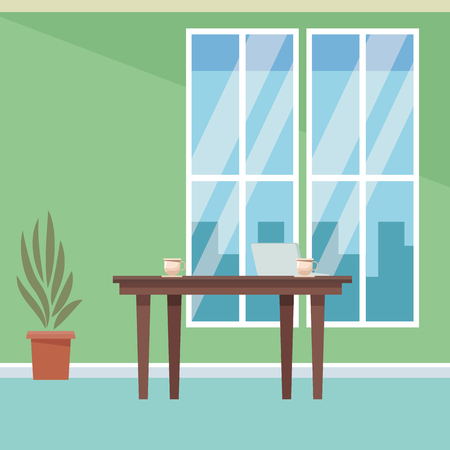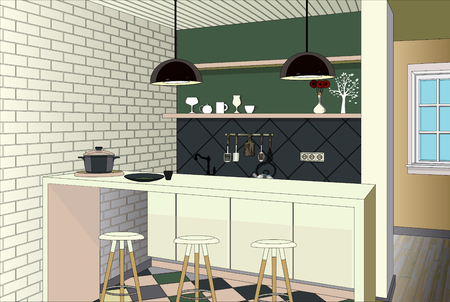Understanding Sustainable Design in the UK Context
When considering sustainable and eco-friendly bedroom design in the UK, it’s essential to grasp what sustainability truly means for British homes. Unlike generic global trends, the UK’s unique blend of local climate, architectural heritage, and ecological concerns shapes how we approach green interiors. British weather—marked by dampness, fluctuating temperatures, and limited sunlight—calls for materials and solutions that insulate well, resist mould, and harness natural light where possible. Furthermore, many UK homes are Victorian or Edwardian builds with distinctive features like sash windows, high ceilings, or period fireplaces; retrofitting these spaces demands sensitivity to both preservation and progress. Additionally, growing awareness around environmental impact has led to greater scrutiny of supply chains and material origins. For homeowners in the UK, sustainable bedroom design goes beyond aesthetics—it’s about choosing responsibly sourced materials, energy-efficient lighting, and locally crafted furnishings that respect both the environment and national heritage. Ultimately, embracing sustainability in this context means balancing comfort and style with a commitment to reducing one’s ecological footprint while honouring the character of British living spaces.
Eco-Friendly Materials and Sourcing
When it comes to sustainable and eco-friendly bedroom design in the UK, material selection plays a crucial role. Choosing locally sourced, recycled, or certified materials not only reduces your carbon footprint but also supports British industries and preserves the unique character of UK homes. Below, we explore some of the most popular environmentally conscious options available for British bedrooms today.
Locally Sourced Materials: Reducing Transport Emissions
Opting for materials produced within the UK limits transportation distances, thereby cutting down on carbon emissions. British wool, for example, is celebrated for its warmth, durability, and natural hypoallergenic properties. Using home-grown wool for bedding, carpets, or upholstery not only supports local farmers but also aligns with eco-conscious principles.
Recycled and Repurposed Elements
The trend towards recycling has gained momentum across the UK’s interior design scene. Furniture made from reclaimed wood or upcycled vintage pieces brings history and individuality into a bedroom while keeping usable resources out of landfill. Similarly, recycled glass or metal accents add a contemporary twist while embodying responsible consumption.
Certified Sustainable Resources
Certification schemes help homeowners make informed decisions about sustainability. The Forest Stewardship Council (FSC) certification is particularly significant in the UK context, guaranteeing that timber is sourced from responsibly managed forests. FSC-certified timber is widely available for bed frames, wardrobes, and flooring, ensuring both quality and ethical sourcing.
Low-VOC Paints: Prioritising Indoor Air Quality
Poor indoor air quality can undermine even the greenest décor choices. Low-VOC (volatile organic compounds) paints are becoming increasingly popular in Britain as they release fewer harmful chemicals compared to traditional paints. Brands such as Farrow & Ball and Little Greene offer extensive palettes of low-VOC paints tailored to UK tastes—combining health benefits with heritage colours.
Popular Eco-Friendly Materials in UK Bedroom Design
| Material | Sourcing Method | Eco Benefits |
|---|---|---|
| British Wool | Local Farms | Renewable, biodegradable, supports local economy |
| FSC-Certified Timber | Sustainable Forestry | Responsible forest management, durable |
| Recycled Wood/Metal | Repurposed from existing items | Reduces waste, unique aesthetic appeal |
| Low-VOC Paints | Manufactured by eco-conscious brands | Improves indoor air quality, safer for families |
This mindful approach to materials ensures that every element in your bedroom—from floorboards to finishes—not only looks beautiful but also minimises environmental impact and reflects the growing sustainability values found throughout the UK.

3. Maximising Energy Efficiency in the Bedroom
When it comes to sustainable and eco-friendly bedroom design in the UK, energy efficiency is a cornerstone. Not only does it reduce your carbon footprint, but it also leads to tangible savings on energy bills—a win-win for both the environment and your wallet.
Insulation: The First Line of Defence
Given the UKs notoriously changeable weather, proper insulation is essential. Start with wall and loft insulation, which can dramatically reduce heat loss during colder months. For period properties or homes with single-glazed windows, consider secondary glazing or thermal curtains to further boost insulation. Even adding an insulating underlay beneath carpets can help keep warmth in and draughts out.
Lighting: Smart Choices for Sustainability
Lighting accounts for a significant portion of household energy use. In British bedrooms, swap out traditional bulbs for LED alternatives—they use up to 90% less energy and last much longer. Take things further by installing smart bulbs that allow you to set timers or dim the lights via smartphone apps, ensuring lights are only on when needed. Embrace daylight where possible; positioning mirrors opposite windows can amplify natural light and reduce dependence on artificial sources during the day.
Window Treatments: Adapting to British Weather
The UK’s weather demands flexible window solutions. Opt for thermal blinds or lined curtains that trap heat during winter but can be pulled back to let in cooling breezes during summer. Consider layered window dressings—such as combining sheer voiles with heavier curtains—to give versatility throughout the year. For those living in areas prone to draughts, draught-excluders along window sills provide an extra barrier against the cold.
Quick Tips for Everyday Efficiency
- Seal gaps around windows and doors with weatherstripping.
- Use draft excluders at the base of doors, especially in older UK homes.
- Switch sockets off at night to avoid phantom energy drain from chargers and electronics.
Conclusion
By integrating these practical strategies—tailored specifically for British climates and living styles—you can create a bedroom that’s both cosy and conscious, reflecting the latest trends in sustainable UK home design.
4. Upcycling and Second-Hand Finds
When it comes to sustainable bedroom design in the UK, upcycling and sourcing second-hand treasures stand out as quintessentially British approaches that celebrate both eco-consciousness and individuality. The UK boasts a rich tradition of charity shops, antique fairs, and bustling online marketplaces like Gumtree and eBay, making it easier than ever to find pre-loved furniture and decorative pieces with character and history.
Charity Shops: A British Institution
From Oxfam to Sue Ryder, charity shops are woven into the fabric of British high streets. These outlets provide a circular economy model where unwanted items find new homes, reducing landfill waste while supporting charitable causes. Browsing these shops is not just about thrifting; its a cultural experience that often leads to unique finds at affordable prices.
Antique Fairs and Markets
The UK’s love affair with antiques is long-standing, with events such as the Ardingly International Antiques & Collectors Fair or the classic Portobello Road Market drawing enthusiasts from across the country. Antique fairs offer a treasure trove of quality craftsmanship and timeless designs perfect for those seeking sustainable alternatives to mass-produced furniture.
Online Marketplaces: Digital Treasure Hunts
Digital platforms like Facebook Marketplace, Freecycle, and Preloved have become go-to destinations for Britons looking to give furniture a second life. These sites allow users to search locally, negotiate directly, and often collect items without excess packaging or transportation emissions—further reinforcing an eco-friendly mindset.
Benefits of Upcycling and Second-Hand Shopping
| Benefit | Description |
|---|---|
| Environmental Impact | Lowers demand for new resources by reusing existing materials |
| Cost-Effective | Offers savings compared to buying brand-new items |
| Cultural Connection | Supports local communities and charities while preserving British heritage |
| Unique Style | Adds personality with one-of-a-kind pieces not found on the high street |
Sustainable Tips for Sourcing Bedroom Pieces
- Look for solid wood furniture that can be easily restored or repainted.
- Consider textiles like vintage curtains or bedding made from natural fibres.
- Give old furniture a new lease on life with simple DIY repairs or upcycling projects.
- Ask about the story behind an item—it often adds sentimental value to your space.
Embracing upcycling and second-hand finds in your bedroom not only minimises environmental impact but also connects you with the vibrant traditions at the heart of British culture. By shopping consciously and creatively, you foster a home environment thats both stylishly individual and truly sustainable.
5. Greenery and Indoor Air Quality
When it comes to sustainable bedroom design in the UK, integrating greenery is more than an aesthetic choice—it’s a step towards healthier, eco-friendlier living. In our often damp, temperate British climate, selecting robust houseplants is key. Plants such as English ivy, spider plants, and peace lilies are well-suited to British homes, thriving in lower light and fluctuating humidity. These species not only withstand typical UK indoor conditions but also work wonders for air quality.
Natural air purification is especially relevant in the UK, where closed windows during colder months can lead to stuffiness and condensation issues. Houseplants act as living filters, absorbing pollutants like formaldehyde and benzene commonly emitted from furnishings and paints. To enhance their effect, position plants near sources of natural light but away from draughts or radiators.
For even greater impact, consider layering your approach with additional natural methods. Opt for regular airing out of your bedroom on dry days to reduce moisture build-up—a simple British tradition that helps curb mould growth. You can also incorporate eco-friendly materials such as wool rugs or linen curtains that naturally regulate humidity.
Finally, sustainability extends to how you care for your plants. Use peat-free compost and collect rainwater for watering when possible—both small but meaningful choices aligned with UK environmental best practices. By mindfully choosing and caring for your bedroom greenery, you’re creating a restful retreat that supports both personal wellbeing and the wider ecological context unique to Britain.
6. Supporting Local Crafts and Artisans
One of the most meaningful ways to create a sustainable and eco-friendly bedroom in the UK is by embracing the wealth of local craftsmanship. Sourcing decor, bedding, and accessories that are made right here in Britain not only supports small businesses and artisans but also helps reduce your carbon footprint by minimising transport emissions. From hand-thrown ceramics in Cornwall to woven wool throws from Yorkshire mills, British craft traditions infuse your bedroom with authenticity and character. Choosing UK-made items means you can trace their origins, often discovering environmentally responsible production methods and ethical working conditions.
When shopping for soft furnishings, look for bedding crafted from organic British cotton or linen, dyed with natural pigments. Accessories such as lampshades made from reclaimed materials or hand-turned wooden bedside tables add a personal touch while promoting circular design principles. Local markets, craft fairs, and online platforms dedicated to British makers offer a treasure trove of unique finds—each piece telling its own story within your home.
Beyond sustainability, supporting local artisans is an investment in cultural heritage. Many craftspeople use age-old techniques passed down through generations, ensuring these skills thrive into the future. By prioritising UK-made products, you play a part in preserving this rich tapestry of British design while creating a bedroom that truly reflects a sense of place—rooted in quality, sustainability, and local pride.
7. Sleep Wellness and Mindful Living
In the UK, the connection between sustainable bedroom design and personal wellbeing is gaining widespread recognition. Embracing eco-friendly practices within your sleeping space isn’t just about protecting the environment—it’s also about nurturing your own physical and mental health. Thoughtfully chosen materials, such as organic cotton bedding or mattresses made from natural latex, have become increasingly popular among Brits who value both comfort and sustainability. These products often carry certifications like OEKO-TEX or the Soil Association, reassuring consumers that their sleep environment is free from harmful chemicals and allergens.
Mindful living extends beyond product selection to include daily habits that support a restorative sleep routine. For example, opting for blackout curtains crafted from recycled textiles can enhance sleep quality by blocking out streetlights typical in urban British settings, while also reducing landfill waste. Similarly, low-VOC paints and FSC-certified wooden bed frames help maintain indoor air purity, contributing to a fresher, healthier atmosphere at bedtime.
The trend towards ‘slow living’—a movement rooted in mindfulness and intentionality—is increasingly reflected in UK bedroom design choices. Integrating nature-inspired elements such as potted plants or responsibly sourced wool throws not only brings a sense of calm but also echoes a commitment to eco-conscious values. By making mindful decisions about what enters your bedroom, you create a sanctuary that supports deep rest and aligns with broader efforts towards sustainable living. Ultimately, these small, considered changes add up, helping you enjoy better sleep while treading lightly on the planet.


